Which of the following is the main function of centrosomes in animal cells?
. Organelle trafficking.
Pathogen digestion.
Cytoplasm formation
Microtubule organization
Correct Answer : D
Microtubule organization.
Centrosomes are organelles that serve as the main microtubule-organizing centers for animal cells.
They regulate the movement of microtubules and other cytoskeletal structures, thereby facilitating changes in the shapes of the membranes of animal cells.
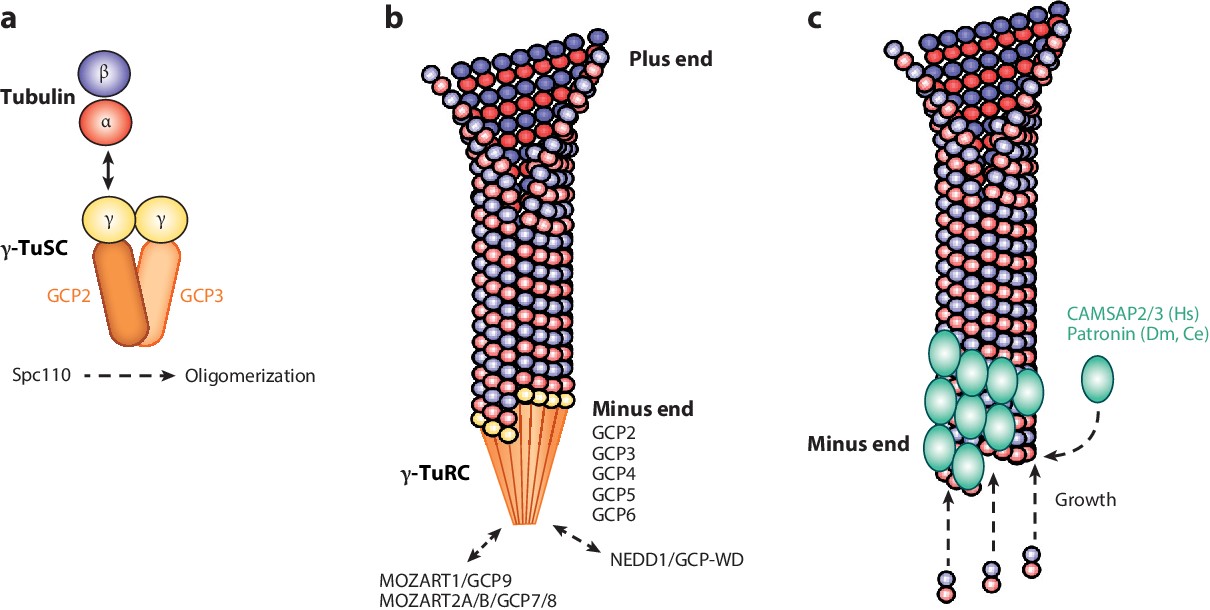
Choice A, Organelle trafficking, is not the correct answer because while centrosomes do play a role in intracellular trafficking during interphase by organizing an astral ray of microtubules, their main function is microtubule organization.
Choice B, Pathogen digestion, is not the correct answer because centrosomes do not play a direct role in pathogen digestion.
Choice C, Cytoplasm formation, is not the correct answer because centrosomes do not play a direct role in cytoplasm formation.
TEAS 7 Exam Quiz Bank
HESI A2 Exam Quiz Bank
Find More Questions 📚
Teas 7 Questions: We got the latest updated TEAS 7 questions
100% Money Refund: 100% money back guarantee if you take our full
assessment pass with 80% and fail the actual exam.
Live Tutoring: Fully customized live tutoring lessons.
Guaranteed A Grade: All students who use our services pass with 90%
guarantee.
Related Questions
Correct Answer is A
Explanation
Urea is a substance that is excreted by sweat glands in response to the breakdown of proteins and the formation of ammonia.
When proteins are broken down, they produce ammonia, which is a highly toxic compound for the body.
Ammonia is then converted into urea and released out of the body through sweat glands.
Choice B.
Sebum is not correct because it is an oily substance secreted by sebaceous glands to lubricate and protect the skin, but it is not related to the breakdown of proteins or the formation of ammonia.
Choice C.
Water is not correct because while it is a component of sweat, it is not specifically related to the breakdown of proteins or the formation of ammonia.
Choice D.
Lysozymes are not correct because they are enzymes found in tears, saliva and other body fluids that have antibacterial properties, but they are not related to the breakdown of proteins or the formation of ammonia.
Correct Answer is B
Explanation
The hypothalamus is a small region of the brain located just above the brainstem. It serves as a critical control center for maintaining homeostasis — the body’s internal balance. One of its key roles is regulating core body temperature through a process called thermoregulation.
The hypothalamus monitors the body's temperature using temperature-sensitive neurons. If the body becomes too hot or too cold, the hypothalamus initiates responses to bring the temperature back to a normal range by:
- Triggering sweating to cool down the body.
- Initiating shivering to generate heat.
- Adjusting blood flow to the skin for heat loss or retention.
In addition to temperature regulation, the hypothalamus also controls other vital functions like:
- Hunger and thirst
- Sleep-wake cycles
- Hormone release (by influencing the pituitary gland)
- Stress response
Why the Other Options Are Incorrect:
- A. Pituitary gland: While the pituitary gland is known as the “master gland” because it controls other endocrine glands, it does so under the direction of the hypothalamus. It does not directly regulate body temperature.
- C. Adrenal gland: The adrenal glands produce hormones like cortisol and adrenaline, primarily involved in the stress response, not temperature regulation.
- D. Pancreas: The pancreas is mainly responsible for regulating blood sugar levels through insulin and glucagon, not body temperature.
Thus, the hypothalamus is the part of the endocrine system most responsible for maintaining homeostasis, including regulating core body temperature.
Correct Answer is B
Explanation
Calcium ions play a crucial role in initiating muscle contraction.
When a muscle cell is stimulated to contract by an action potential, calcium channels open in the sarcoplasmic membrane and release calcium into the sarcoplasm.
Some of this calcium attaches to troponin, which causes it to change shape.
This shape change exposes binding sites for myosin on the actin filaments.
Myosin’s binding to actin causes crossbridge formation, and contraction of the muscle begins.
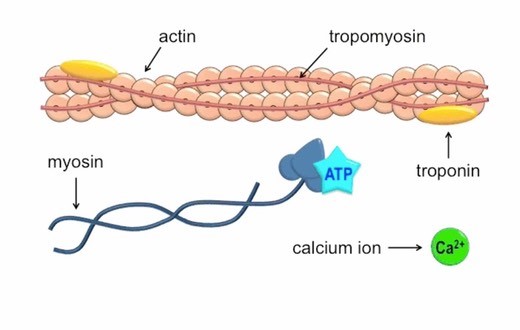
The other ions mentioned in the question do not have this specific role in muscle contraction.
Potassium ions are important for maintaining the resting membrane potential of cells, but they do not bind to the troponin complex.
Phosphorus ions are important for energy metabolism, but they do not bind to the troponin complex.
Sodium ions are important for generating action potentials, but they do not bind to the troponin complex.
Correct Answer is D
Explanation
The pleura is a double-layered serous membrane that covers each lung and lines the thoracic cage
The pleura is a vital part of the respiratory tract.
Its role is to cushion the lung and reduce any friction that may develop between the lung, rib cage, and chest cavity.
Each pleura (there are two) consists of a two-layered membrane that covers each lung.
The layers are separated by a small amount of viscous (thick) lubricant known as pleural fluid.
The pleura is comprised of two distinct layers: the visceral pleura and the parietal pleura.
The visceral pleura is the thin, slippery membrane that covers the surface of the lungs and dips into the areas separating the different lobes of the lungs (called the hilum).
Correct Answer is A
Explanation
Triple point.
In a phase diagram, the term used for a substance held at a temperature and pressure where the solid, liquid, and gaseous states of a substance exist simultaneously is the triple point.
The triple point is a unique point on a phase diagram where the three states of matter (solid, liquid, and gas) can coexist in equilibrium.
At the triple point, the temperature and pressure of the substance are fixed.
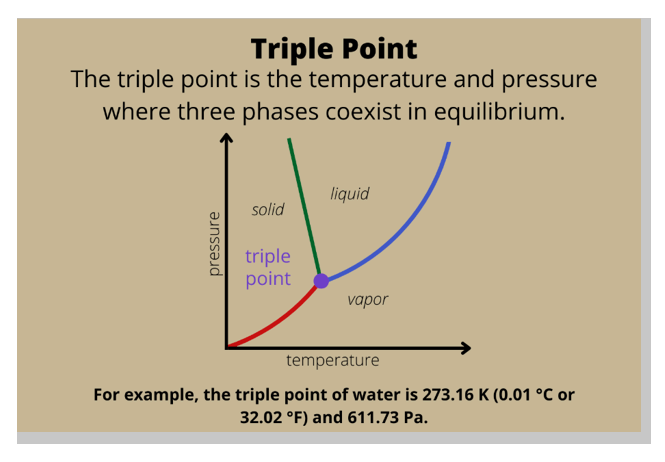
Option B, critical temperature, is the temperature at which a gas cannot be liquefied, regardless of the pressure applied.
It is a characteristic property of a substance and is typically higher than the boiling point of the liquid at standard pressure.
Option C, critical point, is the point on a phase diagram where the liquid and gas phases of a substance become indistinguishable.
At the critical point, the distinction between the liquid and gas phases disappears, and the substance becomes a supercritical fluid.
Option D, absolute zero, is the theoretical temperature at which all matter has zero thermal energy.
At absolute zero, all substances are in their solid state, but it is not relevant to a phase diagram, as it is a temperature where no transitions between states occur.
In summary, the term used for a substance held at a temperature and pressure where the solid, liquid, and gaseous states of a substance exist simultaneously in a phase diagram is the triple point, whereas the other options provided are not relevant or are characteristic properties of substances in different contexts.
Correct Answer is C
Explanation
Carbonic acid.
In the human body, maintaining the pH of the blood within a narrow range is critical for proper physiological functioning.
One of the buffering systems that helps to regulate blood pH involves the conversion of carbon dioxide (CO2) and water (H2O) into carbonic acid (H2CO3), which then dissociates into hydrogen ions (H+) and bicarbonate ions (HCO3-).

Carbonic acid (H2CO3) is responsible for donating H+ ions to act as a buffer when blood pH rises.
When blood pH rises (becomes more alkaline), carbonic acid dissociates, and the H+ ions combine with bicarbonate ions to form more carbonic acid.
This helps to remove excess H+ ions from the blood and prevent the pH from rising too much.
Option A, carbon dioxide, is involved in the buffering system through its conversion to carbonic acid.
However, it does not directly donate H+ ions to act as a buffer when blood pH rises.
Option B, carbon monoxide, is a toxic gas that binds to hemoglobin in red blood cells, preventing them from carrying oxygen.
It is not involved in the buffering system and does not donate H+ ions.
Option D, oxygen, is carried by hemoglobin in red blood cells and is essential for respiration.
It is not involved in the buffering system and does not donate H+ ions.
Correct Answer is A
Explanation
A myocardial infarction affects the coronary blood vessels of the heart.
A myocardial infarction, commonly known as a heart attack, occurs when blood flow decreases or stops in the coronary artery of the heart, causing damage to the heart muscle 1.
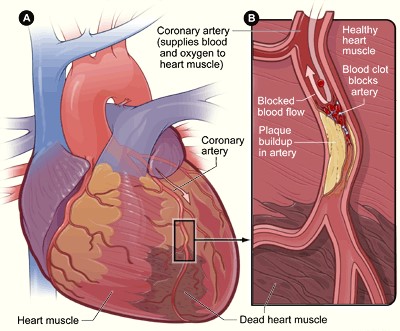
Choice B is incorrect because the aorta is not a blood vessel of the heart.
The aorta is the main artery that carries oxygenated blood from the heart to the rest of the body.
Choice C is incorrect because the pulmonary blood vessels are not affected by a myocardial infarction.
The pulmonary blood vessels carry deoxygenated blood from the heart to the lungs.
Choice D is incorrect because the vena cava is not a blood vessel of the heart.
The vena cava is a large vein that carries deoxygenated blood from the body to the heart.
Correct Answer is B
Explanation
The corpus luteum is a structure that develops in the ovary after an egg has been released.
It secretes the hormone progesterone, which prepares the uterus for a fertilized egg to implant and helps maintain the uterine lining during pregnancy1.

Choice A.
Umbilical cord is not correct because it is a structure that connects the developing fetus to the placenta and provides nutrients and oxygen to the fetus, but does not secrete hormones.
Choice C.
Oviduct is not correct because it is a tube that transports eggs from the ovary to the uterus, but does not secrete hormones.
Choice D.
Oocyte is not correct because it is an immature egg cell, but does not secrete hormones.
Correct Answer is C
Explanation
The pH scale is a logarithmic scale that measures the acidity or alkalinity of a solution.
A solution with a pH of 7 is neutral, while a solution with a pH less than 7 is acidic and a solution with a pH greater than 7 is alkaline.
Because the pH scale is logarithmic, each whole number change in pH represents a tenfold change in acidity or alkalinity.
Therefore, a substance with a pH of 3 is 10 times more acidic than a substance with a pH of 4.
Choice A.
A substance with a pH of 3 is two times more alkaline than a substance with a pH of 4 is not correct because it incorrectly states that the substance with a lower pH is more alkaline and also incorrectly states the magnitude of the difference in acidity or alkalinity.
Choice B.
A substance with a pH of 3 is two times more acidic than a substance with a pH of 4 is not correct because it correctly states that the substance with a lower pH is more acidic but incorrectly states the magnitude of the difference in acidity.
Choice D.
A substance with a pH of 3 is 10 times more alkaline than a substance with a pH of 4 is not correct because it incorrectly states that the substance with a lower pH is more alkaline.
Correct Answer is B
Explanation
The atomic number of an element represents the number of protons in the nucleus of an atom of that element.
Since lithium has an atomic number of 3, it has 3 protons in its nucleus.
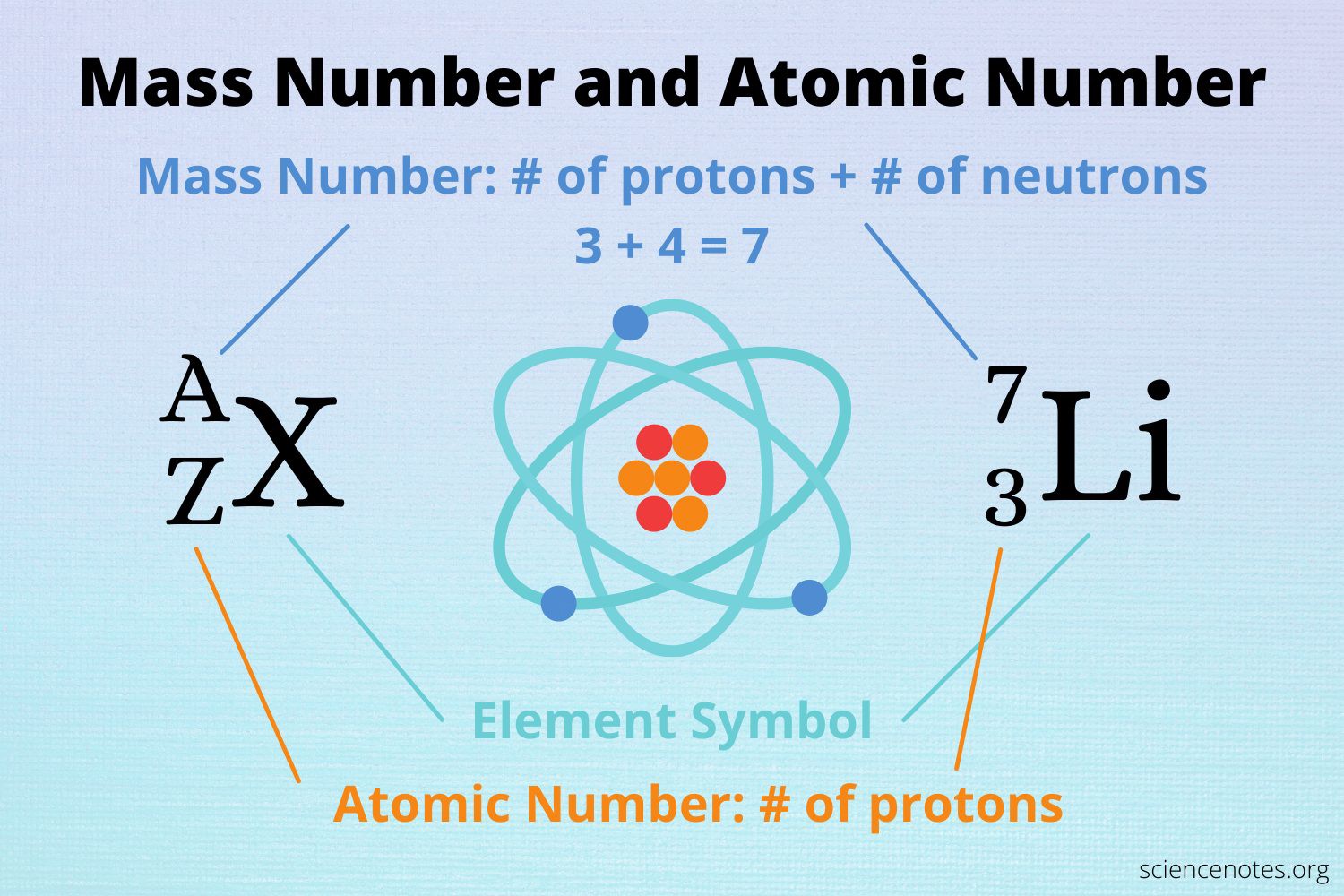
Choice A is not correct because 7 is the mass number of lithium, not the number of protons.
Choice C is not correct because 12 is not the atomic number or mass number of lithium.
Choice D is not correct because 4 is not the atomic number or mass number of lithium.
This question was extracted from the actual TEAS Exam. Ace your TEAS exam with the actual TEAS 7 questions, Start your journey with us today
Visit Naxlex, the Most Trusted TEAS TEST Platform With Guaranteed Pass of 90%.
Money back guarantee if you use our service and fail the actual exam. Option of personalised live tutor on your area of weakness.
